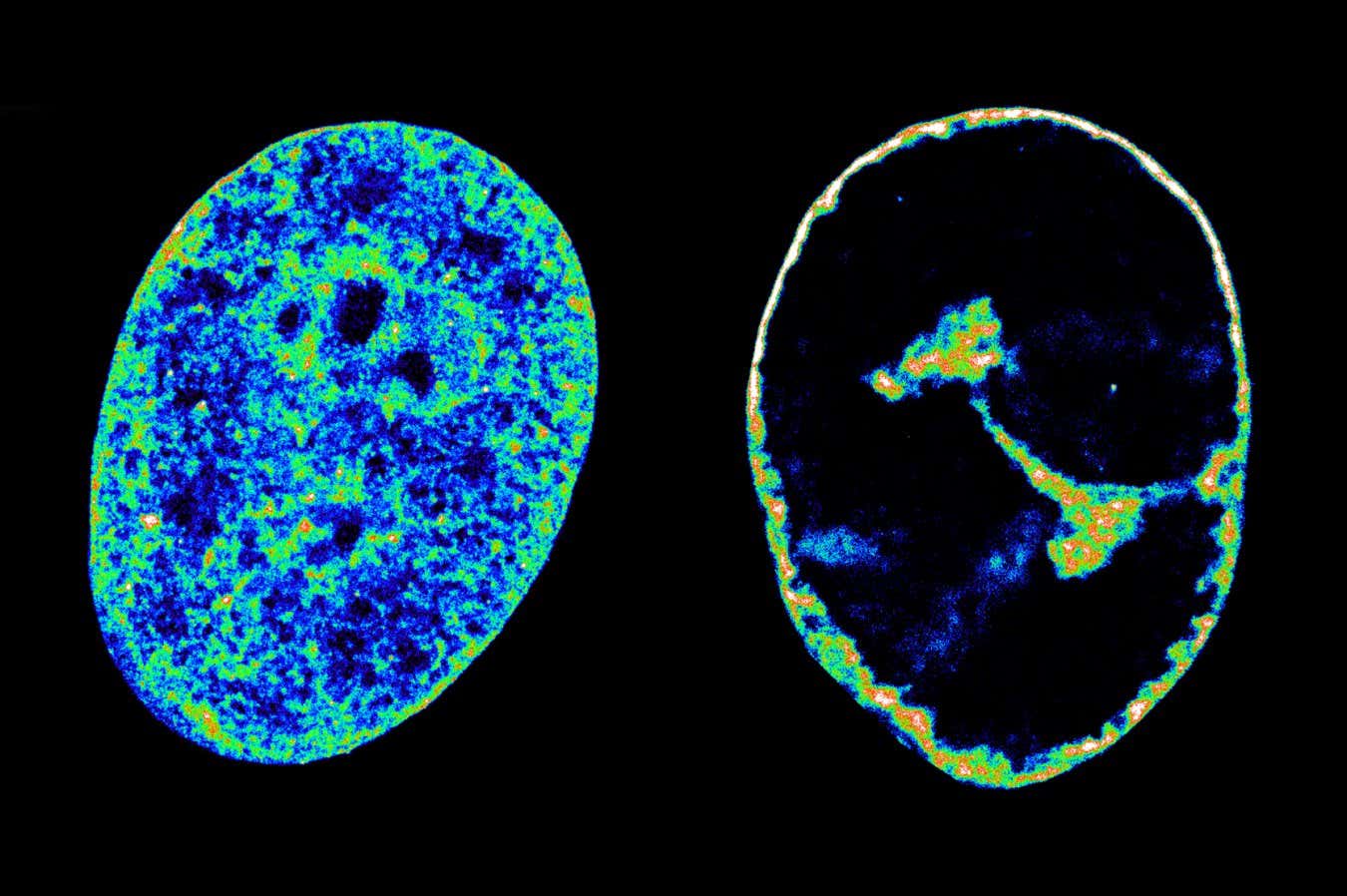The herpes virus that commonly causes cold sores affects how tightly coiled our DNA is and makes it shrink, all to help itself grow
By Carissa Wong
19 June 2025
Human DNA in its natural state inside cells (left) compared with its state 8 hours after being infected with the cold sore virus (right)
Esther Gonzalez Almela and Álvaro Castells García
The virus that commonly causes cold sores starts reshaping our genome within an hour of infection to boost its own growth, which scientists could take advantage of to treat severe cases.
Billions of people around the world have the infection, caused by herpes simplex virus type 1 (HSV-1), although many of them don’t know it. It can spread through contact with other cold sores, saliva or even unbroken skin around the mouth.
Read more
How to tell if your immune system is weak or strong
Advertisement
After invading host cells, the virus replicates in the nucleus, where genetic material is stored as strands of DNA. These strands wrap around proteins, with some regions forming tight coils, inactivating the genes within them, while others form wider loops, where genes are active. In these looser regions, proteins can unwind and transcribe DNA into the molecule RNA, which encodes for proteins that keep the cell running.
Prior studies had shown that the human genome becomes more tightly coiled during HSV-1 infection, which may disrupt cell function, but it was unclear why this coiling occurs.
To learn more, Alvaro Castells-Garcia at the Centre for Genomic Regulation in Barcelona, Spain, and his team imaged HSV-1 while it infected human lung cells, using a microscope that can capture structures 3500 times thinner than a strand of hair. “It’s a higher resolution than most prior studies,” says Castells-Garcia.
